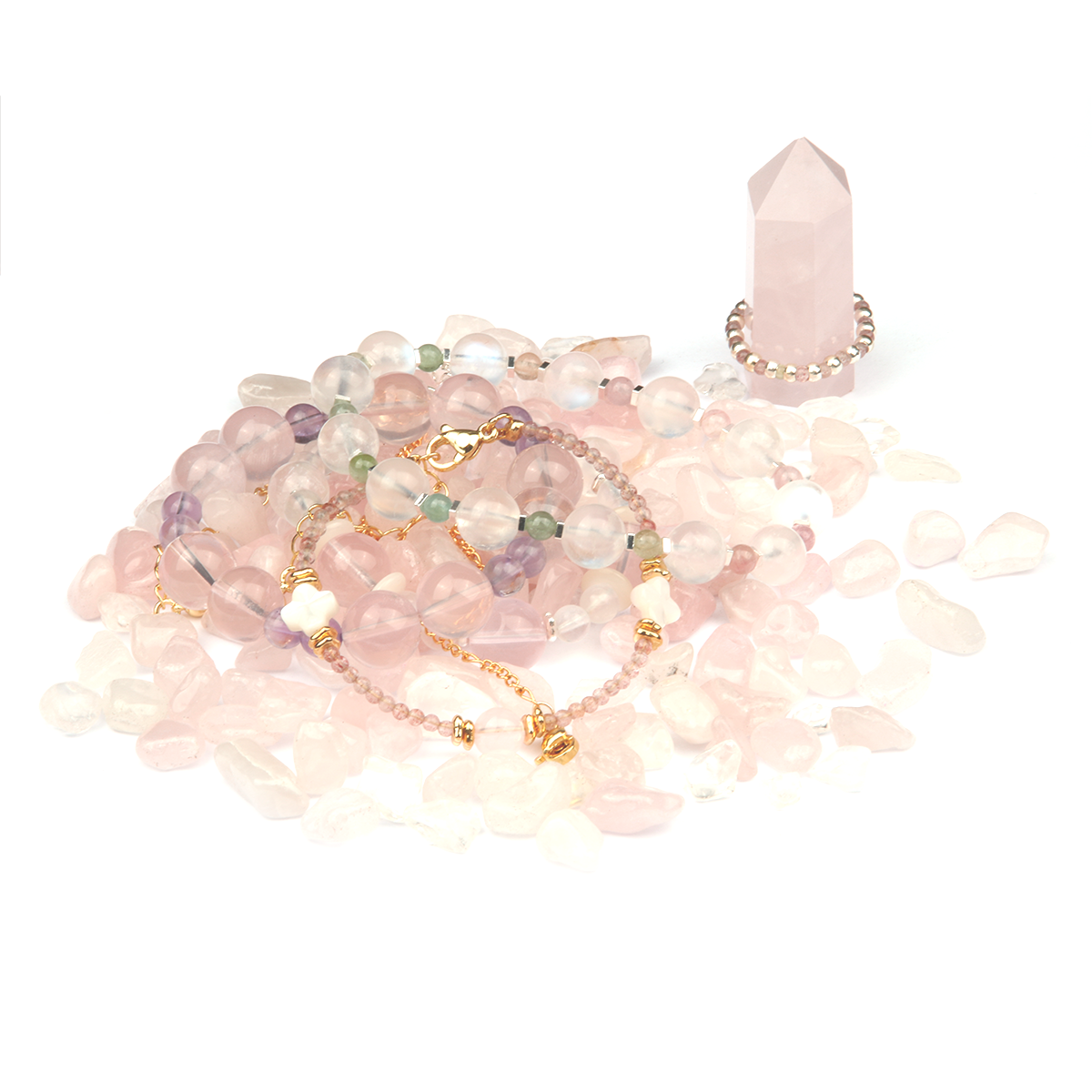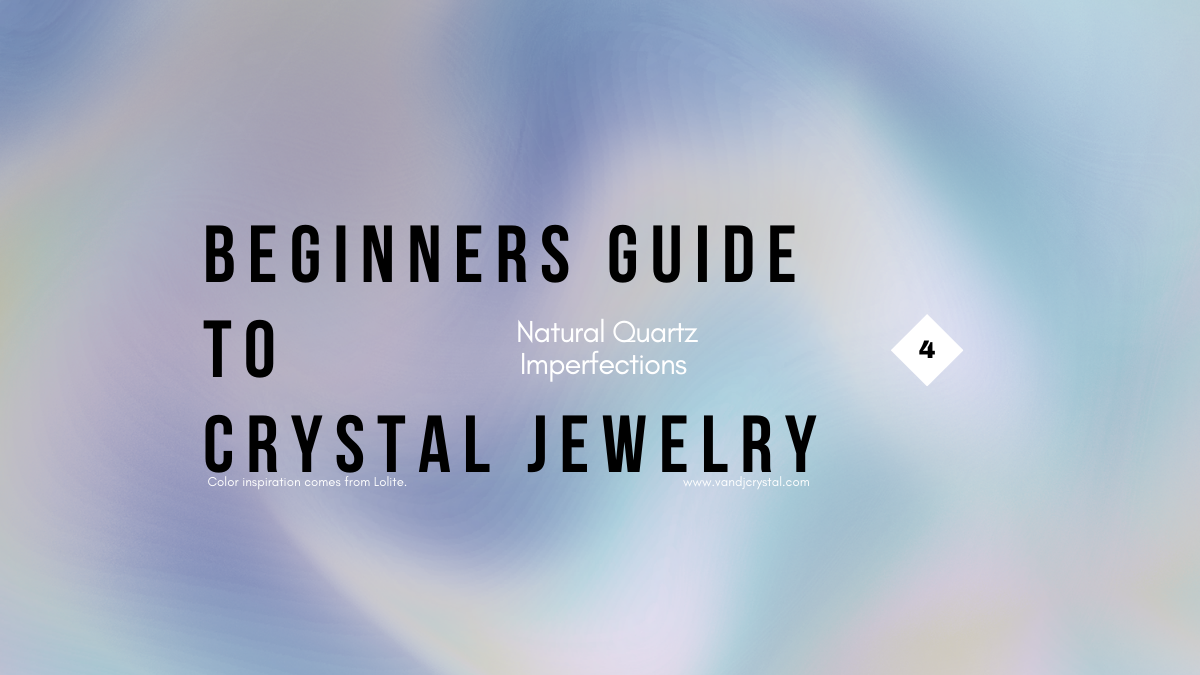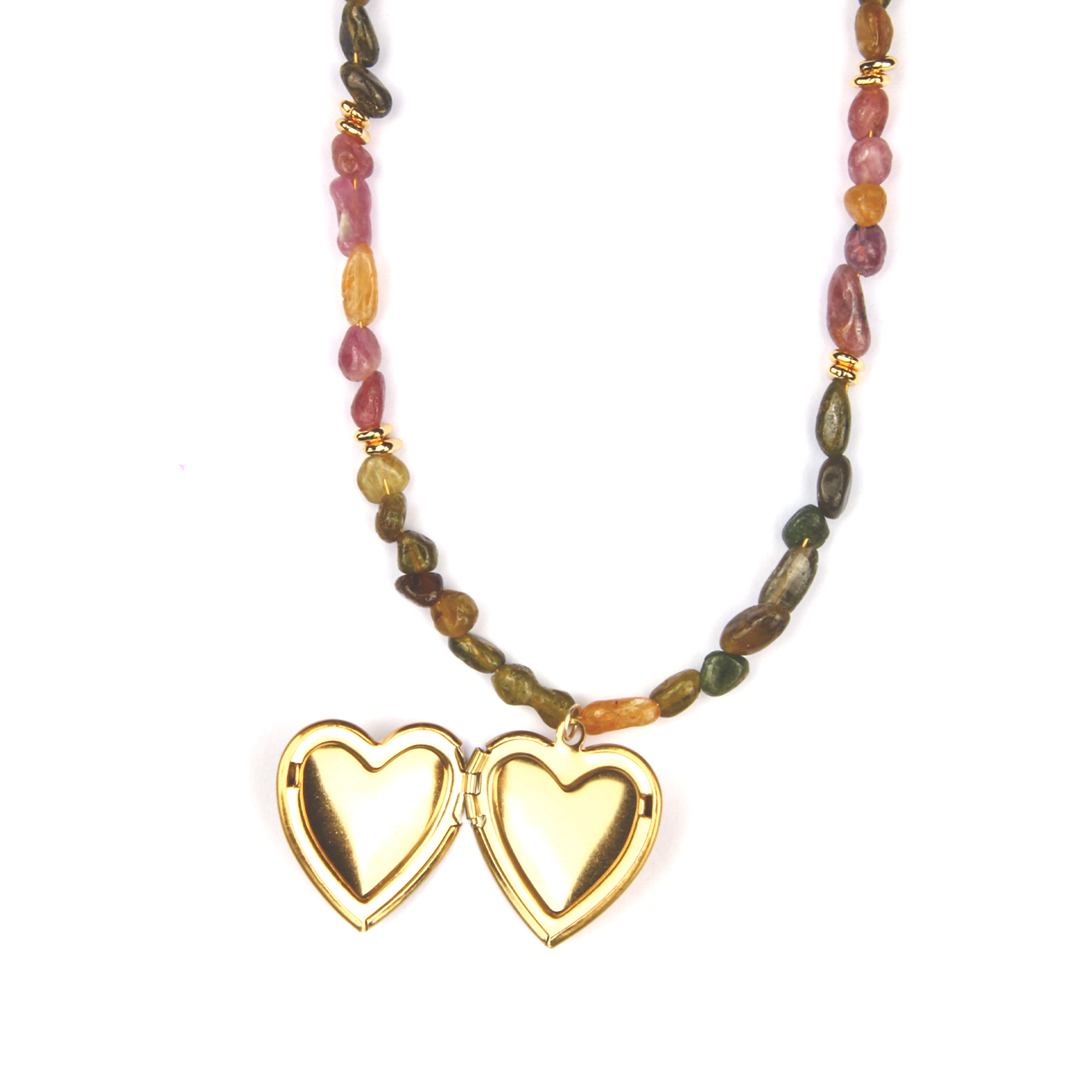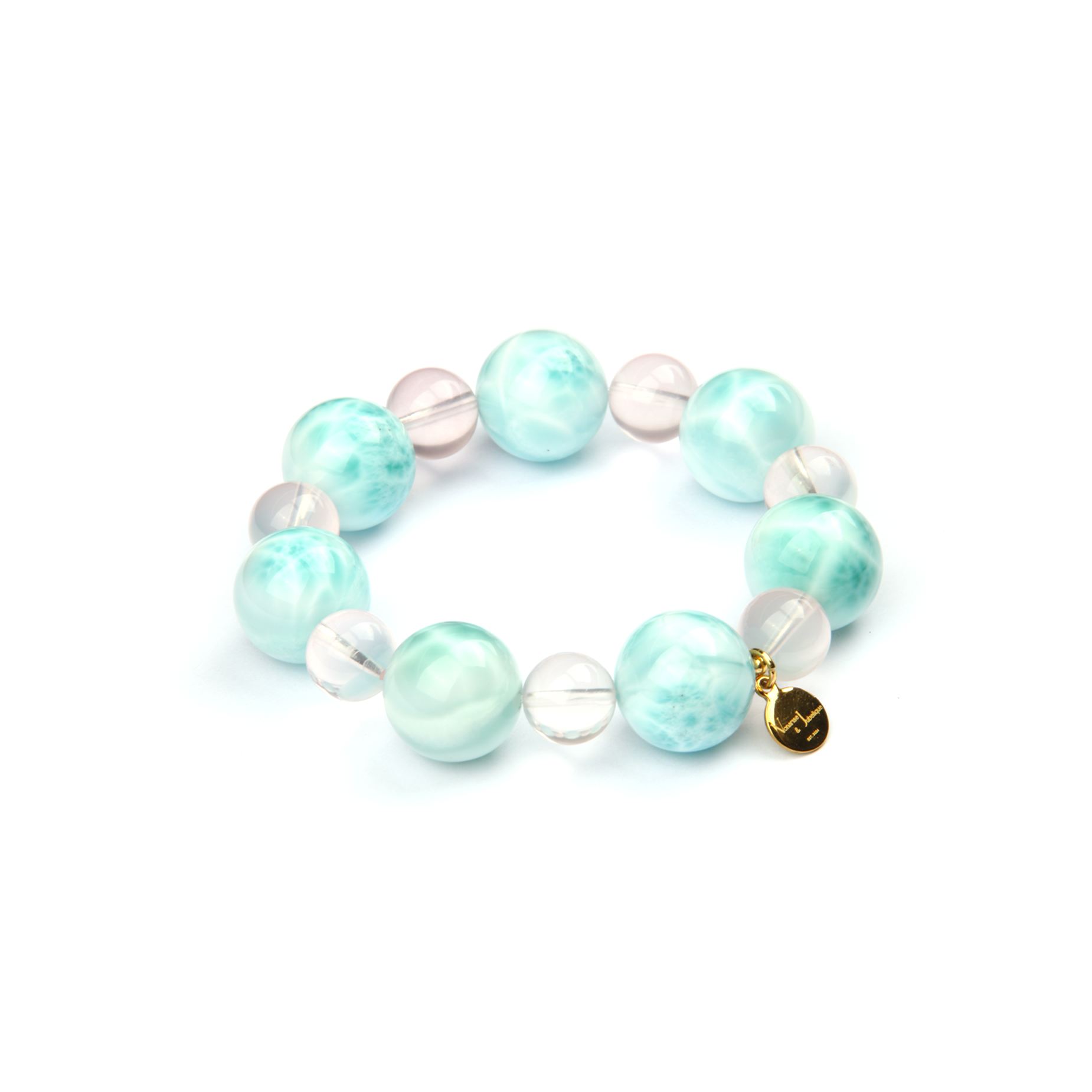Complete Guide to Crystal:
Natural, Polished, Dyed, or Synthetic?
At V&J Crystal, we believe that every crystal has its purpose—whether it’s imperfect, whether it shines, it’s worth being understood and cherished. Whether you're a beginner just stepping into the world of crystals or a collector who already owns a few beloved pieces of jewelry, you might come across terms like "natural," "polished," "dyed," or even "synthetic" when shopping.
These crystal materials can be overwhelming, and it’s common for people to feel uncertain about their authenticity. But don't worry, dear! It’s completely normal for beginners to have difficulty distinguishing these differences.
Let’s take a look at the most common types of crystal materials and learn how to select the one that best suits you. This article aims to provide a fun and honest way to help you shop for crystal jewelry with confidence and ease.
What is Natural Crystals?
Natural crystals are those mined directly from the Earth's mineral layers, then simply polished or cut into beads. These crystals have not undergone complex treatments and retain natural features such as unique patterns, ice cracks, and cotton-like inclusions—marks of nature, which are the "fingerprints" of natural crystals.




The hardness and natural conditions of the crystals may affect the final appearance and durability of the product. For example, softer crystals (like quartz, MOHS hardness 7) may develop small cracks or imperfections during polishing, while harder crystals (like diamonds, MOHS hardness 10) are more difficult to process and are more valuable. Therefore, the uniqueness and flaws of natural crystals give each piece its one-of-a-kind value. In another blog category, the hardness of different crystals is listed, and you can search for the crystals you are interested in. It also provides detailed explanations of the formation of these crystals and the significance of the energy they bring.
Click to view the hardness of the crystals you're interested in.
Features
Real crystals often feature subtle variations in color, transparency, and texture, making each piece one of a kind. These traits are what define true crystal identification by color and form the basis of what real crystals look like.
True crystals typically show:
- Uneven, natural color tones
- Internal inclusions or veining
- Variations in opacity, from translucent to opaque
- Signs of polishing marks or tiny fractures
These traits are key to identifying a crystal and understanding types of crystals in your collection.
Recommended Uses
- Self-healing gift: A perfect companion for your inner journey
- Spiritual initiation gift: For those starting to explore crystals
- Anniversary or birthday gift: Natural crystals symbolize uniqueness and special connections
- Nature enthusiasts: These crystals, in their natural form, are ideal for those who appreciate the beauty of imperfections.
Tip
Every natural crystal is unique. Its imperfections are its true beauty.
Natural Crystal Bracelet:
The raw texture and earth’s frequency make this bracelet ideal for daily wear and meditation, especially for those seeking to enhance intuition and inner peace. Best for naturalism aesthetic lover.
Extra Information: The Glue Injection Process in Crystal Beads
The Glue Injection process is a widely used technique in the crystal and gemstone industry, especially when working with softer or fragile stones. This method helps stabilize crystals that are prone to cracking during cutting, shaping, or drilling into bead form.
This treatment involves injecting a clear resin into micro-cracks or internal fractures in the crystal. While invisible to the naked eye, this resin strengthens the crystal’s structure, reducing the risk of breakage during handling or daily wear—without compromising the natural look or energy of the crystal.
Common Crystals That Require Glue Injection:
| Crystal | Reason for Treatment |
|---|---|
| Aquamarine | Often contains internal fractures, resin helps maintain bead integrity. |
| Agate | Though relatively hard, thin-sliced agate beads can chip during drilling. |
| Jade | Especially softer jade types may crack under drilling pressure. |
| Fluorite | Brittle and prone to flaking—resin stabilizes fragile edges. |
| Chrysoprase | May develop surface cracks; glue helps create smoother, more durable beads. |
Why It Matters:
-
Durability: Reinforced beads are less likely to crack during wear or impact.
-
Aesthetics: Maintains a smooth and polished look while hiding imperfections.
-
Value: Enhances usability in fine jewelry without sacrificing authenticity.
-
Energetic Flow: While minimal, some crystal healers believe resin may slightly reduce energy flow. If you’re energy-sensitive, untreated beads may be preferred for spiritual work.
While glue-injected crystals are still real, it’s helpful for buyers to understand the treatment so they can choose pieces that best align with their aesthetic or energetic needs.
Identification Method
To identify glue-injected crystals, carefully observe the surface for cracks or transparent resin filling in those cracks. You can use a magnifying glass to check for areas where the glue may have a slightly different shine, color, or transparency. The glue injection may also cause slight smoothness in the crystal's surface, and the areas with resin may feel softer compared to the natural crystal.
Is It Real Crystal?
Yes, glue-injected crystals are still real crystals. The Glue Injection process only strengthens and repairs the natural crystal without altering its mineral composition. The crystals maintain their essence as real stones but have been treated to make them more durable and less prone to damage during processing or daily use.
Impact on Crystals
The Glue Injection process primarily impacts the durability of the crystal, making it less likely to break during handling or wear. The treatment doesn’t significantly affect the crystal’s appearance, but slight color changes or smoothness in areas of injection may occur. As for the crystal's energy, some believe the glue may slightly affect its natural properties, though the impact is minimal. For those concerned with the energetic flow, untreated, non-glue-injected crystals are recommended. However, glue-injected crystals are an excellent choice for jewelry that requires extra durability.
What is Polished or "Water Washed" Crystals
Polished or water-washed crystals are natural crystals that undergo a further treatment to smoothen their surface and enhance their transparency. This treatment helps the crystal look cleaner and brighter, with its patterns becoming more subdued, while still preserving the natural mineral structure. Water-washed crystals generally maintain a high MOHS hardness (e.g., lapis lazuli, MOHS 5.5), and the processing is gentle, maintaining their natural features.
Features
- Smoother surface and glossy texture
- Does not alter the crystal’s inherent structure
- Appears more “perfect” visually
Gentle Reminder
This treatment is not “fake”; it’s simply to improve the visual and tactile experience, perfect for those who enjoy sleek, clean lines.
Usage/Pearing Suggestions
- Minimalist style: Polished crystals, with their smooth surfaces, are perfect for modern minimalist jewelry like bracelets or necklaces.
- Gift: With their bright and clean appearance, polished crystals make great gifts for special occasions like birthdays or anniversaries.
- Daily wear: Ideal for those who appreciate simple, transparent pieces, and they fit into a variety of everyday settings.
What is Dyed Crystals
Dyed crystals are artificially colored to change their appearance and give them vibrant, uniform hues. Some brightly colored, uniform crystals may actually be dyed. The dyeing process is usually applied to more affordable crystals like agate or white quartz. Since some colors are rare in nature, or crystals in certain colors can significantly increase in value, some merchants may dye ordinary crystals to achieve eye-catching colors. This process can sometimes affect the internal patterns of the crystal.
-
Dyed quartz meaning: Primarily decorative; energy-sensitive individuals may find them energetically weaker.
-
Dye crystals: Affordable, visually bright, but more for style than metaphysical work.
Features
- Vibrant but unnatural color
- The dye is often concentrated on the surface or cracks
- Generally, less expensive and used for decorative jewelry

We encourage everyone to understand the difference between dyed and natural crystals—not to dismiss dyed crystals, but to know exactly what you're buying.
How to Tell if a Crystal Is Dyed
Use these simple tests for crystal identification by color:
-
Cotton swab test: Gently wipe the surface—if color rubs off, it's likely dyed.
-
Surface cracks: Dye often pools in micro-cracks; look for uneven concentration.
-
Unreal uniformity: If color is overly saturated or perfectly consistent, it may be dyed.
-
Scratch test & scent check: Real stones have natural hardness and no chemical odor.
What is Synthetic or Lab-Created Crystals
Synthetic crystals are produced in laboratories by mimicking the natural crystallization process. They closely resemble natural crystals in appearance, but with a uniform structure that is almost flawless, and they lack the internal inclusions and variations found in natural stones. While the cost is lower, synthetic crystals are often used for display or decorative purposes.
Synthetic Features Crystal
- No inclusions or impurities
- Low cost, ideal for industrial or decorative use
How to Identify Synthetic/ Lab-made Crystal
Natural crystals often have subtle differences and natural textures. If every piece looks identical and flawless, it’s likely synthetic.
We use only natural materials because we believe the natural traces are what make crystals powerful companions for your real life.
How to Quickly Identify Crystal
Simple Identification Tips
- Look at the textures: The more natural and imperfect it is, the more likely it's natural.
- Look at the color: Is it too vibrant or uniform?
- Smell: Dyed crystals may have a faint chemical scent.
- Bright colors? Likely dyed.
- Completely flawless? Possibly synthetic.
- Inclusions, cloudiness? Most likely natural.
- Extremely low price? Be cautious with claims of "100% natural."
Further Insights, do You Really Understand the Value of Crystals?
For intermediate and advanced crystal enthusiasts, understanding the value behind crystals can enhance your selection skills and appreciation.
Meaning & Use of Dyed vs Natural Crystals
-
Natural crystals hold metaphysical power and crystalline integrity—suitable for healing and spiritual alignment.
-
Dyed crystal pieces may suit decorative jewelry or color-focused aesthetics, but lack energetic consistency—while they’re not necessarily 'bad', they don’t offer the same healing benefits.
What Factors Make Up Crystal Value?
Crystal value is not just about appearance, it’s influenced by multiple factors such as:
- Origin: Crystals from rare mines like jade from Myanmar or amethyst from Brazil are often more valuable.
- Rarity: Certain crystals like moonstone and obsidian are scarce and highly coveted.
- Integrity: Crystals without cracks or imperfections generally hold more value.
- Cut: Precision cutting enhances the crystal’s sparkle and value.
Is There a Scientific Basis for Energy Differences Between Natural and Synthetic Crystals?
Currently, there’s no hard scientific evidence proving that natural crystals have stronger energy than synthetic ones. However, many crystal enthusiasts and meditators believe that the unique formation process of natural crystals carries more potent energy. While this sensation cannot be quantified scientifically, its emotional and spiritual impact cannot be ignored.
To sum it up: The perception of energy is more subjective and based on personal experience rather than something measurable with instruments.
Who Should Use Synthetic Crystals?
While natural crystals are often believed to possess stronger energy, they may not be suitable for everyone. Sensitive individuals may experience discomfort when wearing natural crystals, due to their strong energy. For these people, synthetic crystals can offer a milder and more controlled energy experience, making them a better choice for those who are more energy-sensitive.
How to Identify Crystal Names & Types
Curious about your crystal? Ask:
-
“How to know what crystals I have?” Check color, hardness, and inclusions.
-
“Crystal what is it?” Use a field guide or app to match visual characteristics.
-
Types of crystals range from quartz and calcite to lapis, tourmaline, selenite, and dyed forms.
Final Thoughts
At V&J, we are committed to offering clear and transparent descriptions of the materials used in each product, while presenting the texture and warmth of every piece. We hope that each wearer will feel confident in their choices, knowing they’ve selected a crystal that resonates with them. Crystals don’t have to be flawless to be meaningful—choose your crystal with understanding, and embrace its unique beauty.
If you have any questions about a particular crystal, feel free to contact us. We’re happy to help you identify and choose the best crystal for you.
Q&A
Q1: What is the difference between dyed crystals and natural crystals?
A: Natural crystals are mined from the Earth and retain their original color, texture, and inclusions. Dyed crystals are artificially colored—often using heat or chemical treatments—to enhance or completely change their appearance. While dyed crystals can be visually appealing, they don’t carry the same energetic properties as untreated, natural crystals.
Q2: How can I tell if a crystal is dyed?
A: You can identify a dyed crystal by checking for vibrant or overly uniform color, testing the surface with a damp cotton swab (if color rubs off, it’s dyed), and inspecting for dye pooled in cracks. Authentic crystal identification by color includes subtle shifts in tone, not bold uniformity.
Q3: Are dyed quartz or dyed crystals worth anything?
A: Dyed quartz and similar crystals are typically less valuable than natural gemstones. While they may be suitable for fashion jewelry, they lack the rarity, authenticity, and metaphysical strength that collectors or spiritual users seek in natural crystals.
Q4: Can dyed crystals be used for healing or metaphysical purposes?
A: While dyed crystals may still carry some vibrational energy, many practitioners believe the dyeing process can alter or dilute the stone’s natural properties. For full spiritual benefit, it's recommended to use natural or untreated crystals.
Q5: What does a real crystal look like?
A: Real crystals usually have natural imperfections, color zoning, internal fractures, or inclusions. They feel cool to the touch and vary slightly in shape and color. Learning how to identify crystals by these traits is essential when choosing authentic pieces.
Q6: How do I identify what type of crystal I have?
A: To identify a crystal, examine its color, transparency, weight, and surface texture. You can also check the Mohs hardness scale, test light reflection, and use identification apps or guides. If the color is unusually bright or too flawless, it might be dyed or synthetic.


















Share:
Crystal Jewelry Care Guide: How to Prevent Fading, Scratches, and Broken Strands